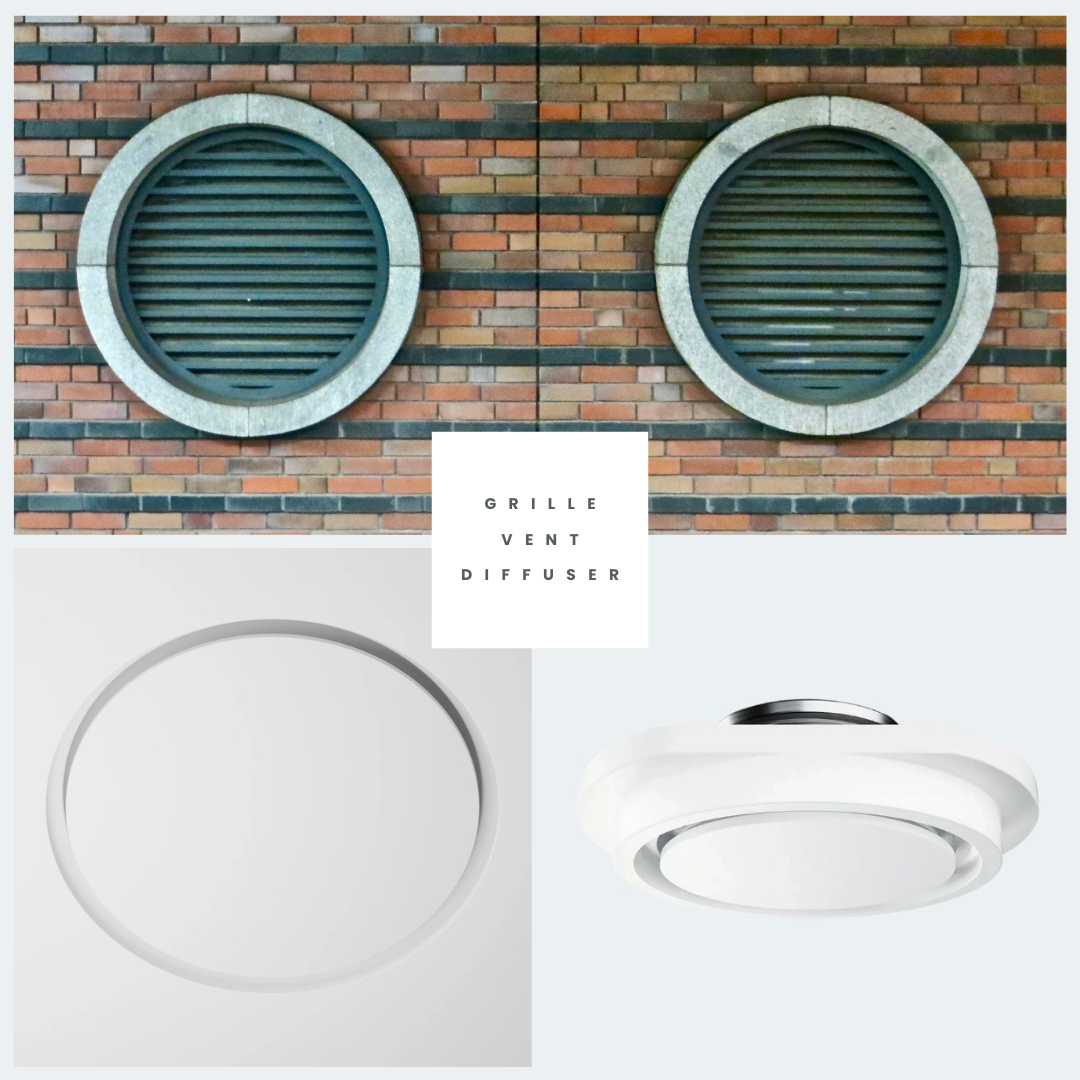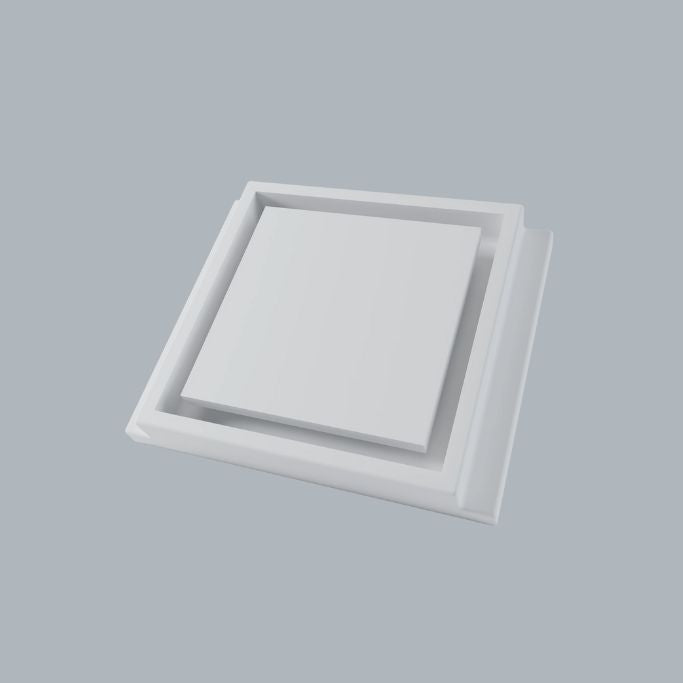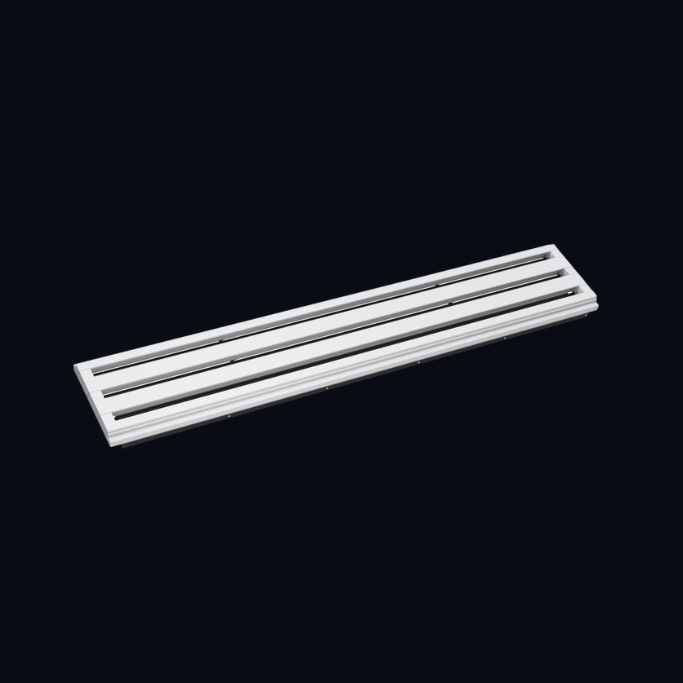What's the difference between grille, vent and diffuser?

When it comes to heating, ventilation, and air conditioning (HVAC) systems, many people use the terms air diffuser, register, grille, and vent interchangeably. While they all relate to how air flows in and out of a room, there are key differences in their design, function, and placement. Understanding these differences is crucial if you’re designing or upgrading your home or commercial ventilation system.
In this guide, we’ll break down the distinctions between grilles and diffusers, explain what a vent really is, and even cover modern solutions such as the vertical slot diffuser residential designs used in contemporary interiors.

Why Terminology Matters in HVAC
At first glance, the difference between a grille, vent, and diffuser might seem like a technical detail. But in reality, knowing these distinctions helps you:
- Select the right product for airflow performance.
- Achieve better energy efficiency in your HVAC system.
- Design interiors with aesthetics in mind, using modern architectural solutions instead of bulky hardware.
For homeowners, architects, and contractors alike, understanding HVAC terminology means making smarter decisions during construction or renovation.

What Is an Air Diffuser?
An air diffuser is a device installed at the end of an HVAC duct. Its main role is to distribute air evenly into a room. Unlike a simple vent, diffusers are designed to mix the incoming air with the room’s existing air for better comfort and airflow control.
Key characteristics of air diffusers:
- Can include adjustable dampers to control direction and volume of airflow.
- Available in multiple designs, such as linear diffusers, slot diffusers, and square ceiling diffusers.
- Often chosen for modern interiors because of their ability to blend into plasterboard ceilings and walls.
For example, a vertical slot diffuser (residential) is a popular option in contemporary homes. It provides discreet air distribution without interrupting clean architectural lines, making it ideal for modern living rooms, kitchens, and open-plan spaces.

What Is a Register?
A register is similar to a grille but with one key addition: it includes a damper. This means the homeowner or building operator can adjust the amount of air passing through the duct.
Registers are commonly found:
- On the floor (in older or traditional systems).
- On the wall or ceiling (in modern HVAC layouts).
They are functional and practical but often not as subtle or aesthetically pleasing as newer architectural air diffusers.
What Is a Grille?
A grille is the simplest form of air duct cover. It’s usually a stationary, decorative cover that allows air to pass through while preventing larger objects from entering the ductwork.
Features of HVAC grilles:
- No adjustable dampers (unlike registers or diffusers).
- Typically used on return air ducts where airflow doesn’t need to be controlled.
- Available in many styles, from basic metal grids to custom-designed decorative covers.
This is where the common confusion arises — many people refer to any duct cover as a “vent” or “grill.” In fact, the correct spelling is “grille” when discussing HVAC systems. The term “grill vs grille” often appears in search queries, but in HVAC terminology, “grille” is the accurate form.

What Is a Vent?
The term vent is more general. A vent is simply the opening through which air flows into or out of a room. It can be covered by a grille, register, or diffuser.
- If the vent has a decorative but fixed cover → it’s a grille.
- If the vent includes a damper for control → it’s a register.
- If the vent is designed to distribute air evenly into the space → it’s a diffuser.
So, all registers, grilles, and diffusers are technically types of vents, but not all vents are registers, grilles, or diffusers.
Grilles and Diffusers: How Do They Compare?
When discussing HVAC grilles and diffusers, the main distinction comes down to function vs aesthetics vs control:
- Grilles: Provide a simple, stationary cover. Mostly functional, with minimal design impact.
- Registers: Add airflow control with dampers. Practical, but not always visually appealing.
- Diffusers: Deliver controlled airflow distribution, often with a design that can be integrated into modern interiors.
For commercial spaces or high-end residential projects, grilles and diffusers are often chosen strategically — grilles for return ducts, diffusers for supply air. Together, they create a balanced system that is both functional and aesthetic.

Modern Trends: Architectural Air Diffusers
In recent years, there’s been a shift toward architectural air diffusers that blend into walls and ceilings. Unlike bulky registers or visible grilles, these diffusers are designed to disappear into the background while still delivering effective airflow.
For example, a vertical slot diffuser residential system is:
- Near invisible in plasterboard ceilings or walls.
- Designed with clean, modern lines to complement minimalist interiors.
- Perfect for luxury homes, apartments, and offices where design matters as much as performance.
These diffusers answer the growing demand for HVAC solutions that don’t compromise on style.
Grill vs Grille: Clearing the Confusion
One of the most searched terms is “grill vs grille.” In everyday language, “grill” often refers to outdoor cooking equipment. In HVAC terminology, however, the correct spelling is “grille.”
- Grill → A cooking surface, usually outdoors.
- Grille → An HVAC duct cover, stationary or decorative, used in ventilation systems.
Using the correct spelling is important in both professional communication and when searching for products online. If you’re looking for HVAC grilles and diffusers, make sure to include the extra “e” — otherwise, you may end up with barbecue equipment instead of air distribution products.
Choosing the Right Solution
- A vent is any opening for airflow.
- A grille is a stationary cover, usually decorative, with no damper.
- A register is a grille with a damper for controlling airflow.
- A diffuser distributes air evenly and often blends into interiors, with options like linear slot diffusers and vertical slot diffuser residential designs.
When planning your HVAC system, choosing between grilles and diffusers depends on both functionality and design. For modern projects, architectural diffusers are often the best choice, offering performance, efficiency, and near-invisible aesthetics.

Understanding the subtle differences between grilles, registers, diffusers, and vents is essential for anyone working with HVAC systems. Whether you’re a homeowner curious about your air vents, an architect specifying materials, or a contractor installing a system, knowing the correct terminology helps you choose the right product.
At the same time, modern solutions like architectural air diffusers and residential vertical slot diffusers prove that HVAC elements don’t need to be an eyesore. Instead, they can disappear into your interior, leaving behind comfort, performance, and timeless design.






